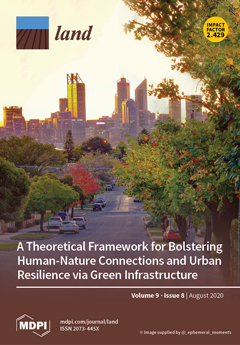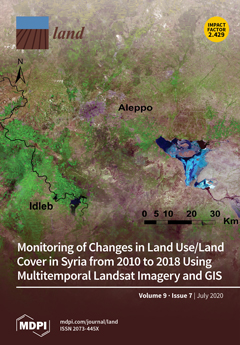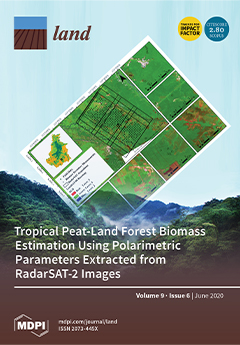Indonesia has the most favorable climates for agriculture because of its location in the tropical climatic zones. The country has several commodities to support economics growth that are driven by key export commodities—e.g., oil palm, rubber, paddy, cacao, and coffee. Thus, identifying the main…
Agroforestry, as the dominant land use at the volcanic foot slope in Java Island, is prone to landslide due to a combination of rough relief and thick soil layer. However, evaluations of specific vegetation patterns against landslide reactivation due to soil erosion, which relays on the existing…
The accelerated development of new urban areas has an impact on changes in the spatial use and complexity of ecosystems. The purpose of this study is to analyze (1) spatial transformation works as a determinant of changes in the social formation of local communities in the new city area of Metro…
Belowground roles of agroforestry in climate change mitigation (C storage) and adaptation (reduced vulnerability to drought) are less obvious than easy-to-measure aspects aboveground. Documentation on these roles is lacking. We quantified the organic C concentration (Corg) and soil physical…
The complexity of spatial use has an impact on poverty and the development of slum settlements towards a decrease in environmental quality. In this study, we aim to analyze (1) urbanization and spatial expansion as determinants of spatial dynamics in suburban areas, (2) the effect of spatial…
Tree root systems stabilize hillslopes and riverbanks, reducing landslide risk, but related data for the humid tropics are scarce. We tested fractal allometry hypotheses on differences in the vertical and horizontal distribution of roots of trees commonly found in agroforestry systems and on…
Forest conversion to agriculture can induce the loss of hydrologic functions linked to infiltration. Infiltration-friendly agroforestry land uses minimize this loss. Our assessment of forest-derived land uses in the Rejoso Watershed on the slopes of the Bromo volcano in East Java (Indonesia)…
Forests play a crucial role in the fight against global climate change. The communities that live in and around forests are well-placed to carry out climate change mitigation and adaptation strategies. The Association of Southeast Asian Nations (ASEAN) recognizes that social forestry enables…
New town development as a form of large-scale development is not a new phenomenon, particularly in developing countries. This development mainly takes place in peri-urban areas due to the high pressure caused by the growing population and the lack of facilities and infrastructure in city centres…
The fast-growing palm oil economy has stimulated a significant expansion of oil palm plantations in Indonesia. The uncontrolled development of large oil palm plantations has raised complex socio-ecological issues, including changes of ecological landscapes, organization of production, and…
Ecosystem services in oil palm plantations owned by smallholders in four villages in the Riau Province, Indonesia were identified and valued. Nine provisioning, three regulating and maintenance, one cultural ecosystem service, and a single ecosystem dis-service, were identified from interviews…
Ecotourism has been promoted in many regions of Indonesia as a viable platform for reducing emissions from deforestation and forest degradation in developing countries (REDD+) by providing incentives to local communities for their forest conservation efforts. This study aims to find…






